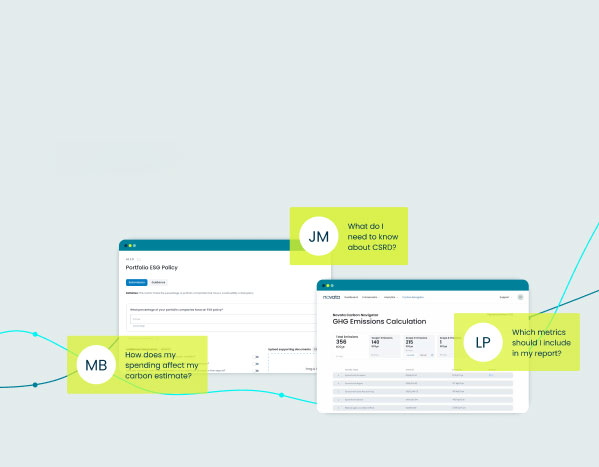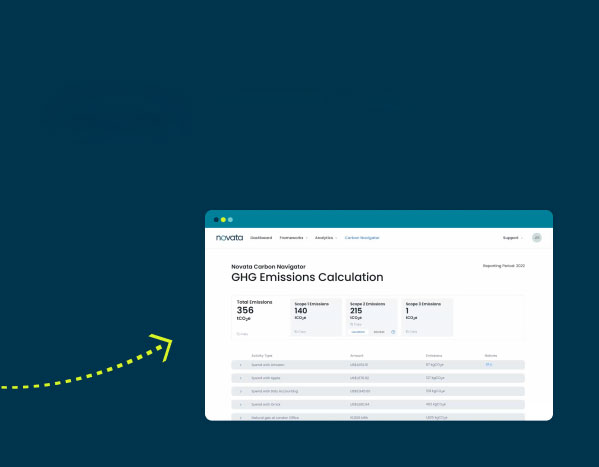Most companies measure and report carbon emissions voluntarily because of pressure from their investors and stakeholders, driven by organizations like CDP, DJSI, and other investor-focused industry groups. To date, there have been few regulatory requirements for this data to be assured by a third party. This is quickly changing, and for many companies, an important next step is securing assurance of their carbon inventory and other sustainability data as they would their financial information.
In private markets, investors and regulators are demanding increased transparency into reporting processes and data. Regulations such as the EU’s Corporate Sustainability Reporting Directive (CSRD) require companies to undertake at least limited assurance of their sustainability information. Likewise, California’s SB 253 will require companies’ Scope 1, 2, and 3 emissions data to be assured, and the US Securities and Exchange Commission (SEC) is requiring limited assurance of Scope 1 and 2 emissions. With this demand for quality information and associated scrutiny on the rise, engaging a firm for assurance can help companies verify the accuracy of their sustainability claims and increase investor confidence in reported data.
According to Heather Moore, partner at ERM CVS, an independent sustainability assurance firm and Novata partner organization, when reviewing against established reporting criteria and assurance standards, sustainability assurance providers use their subject matter and technical expertise to ascertain the completeness, accuracy, relevancy, consistency, and transparency of information. In the case of greenhouse gas (GHG) emissions reporting, this means holding companies to the requirements in its Reporting Criteria. Typical examples of reporting criteria include WRI/WBCSD’s Corporate Accounting and Reporting Standard (GHG Protocol) or ISO 14064-1:2018. These internationally recognized reporting standards govern how companies measure and report on their Scope 1, 2, and 3 emissions. Additionally, the assurance process confirms that companies are accounting for all facilities under their control, emissions factors are accurate, and appropriate controls are in place.
Due to the complex nature and breadth of the subject matter, assurance of sustainability information relies heavily on professional judgment due to the complex nature and breadth of reporting. Therefore, it is important to use an assurance body with sufficient sector and technical knowledge to make informed conclusions.
Steps to Prepare for Carbon Data Assurance
For companies considering third-party assurance of carbon data, here are some tips for understanding and preparing for the process.
1. Create an audit trail
Documenting processes is one of the most important steps in getting ready for assurance. Keeping track of methodologies, chains of responsibility, boundaries, emissions sources, and the process of collecting and storing the data is critical to help auditors verify the company’s data and sustainability claims during the assurance process.
The EPA’s Inventory Management Plan is a good starting point for companies to determine what information to document as they build their carbon inventory. One challenge to large organizations is keeping track of the multitude of data sources — from utility invoices, meter readings, real estate data, purchase records, and more. As organizations scale, a centralized platform can make tracking large amounts of data easier and minimize the chances of errors due to manual entries. Novata’s platform, for example, makes it easy for companies to calculate and track audit-ready carbon and ESG data in one platform.
2. Follow a consistent methodology
When building a carbon inventory with multiple parties, different interpretations of guidance can increase the risk of inconsistencies in how data is calculated, pulled, or reported. Outlining clear definitions in a Basis of Reporting and following a documented methodology can improve cohesion across the organization and increase confidence in the quality of data being collected. This, in turn, helps increase the potential for an efficient assurance engagement. Data stored on a centralized management system, for instance, may be quicker to review as these systems typically have more controls for quality compared to manual entry in a spreadsheet. For companies reporting on the Novata platform, clear guidance and guardrails help increase alignment on how different users collect and calculate emissions data.
3. Allocate resources appropriately
Before undertaking assurance, two important considerations for companies are: 1) the cost associated with assurance and 2) the timeline to complete the process. According to Moore, the cost will depend on factors such as the size of the company, the type of assurance (i.e., limited or reasonable), the scope of the engagement, and data collection, storage and reporting processes.
From a timing perspective, Moore recommends allocating between 2 to 5 months to complete the process. This allows time for assurance providers to review the data, request additional information, and for the company to address the findings. While some companies go through the process annually, many mature companies conduct assurance more frequently which can help ease the pressure when emissions reporting aligns with financial reporting.
4. Align internal stakeholders
Often, the sustainability director acts as the corporate point person for the assurance team when assuring carbon data; however, it is a collaborative process that involves multiple teams. Assurance providers will need to interview several different internal stakeholders, from procurement to HR to facility managers. Preparing the internal stakeholders involved in collecting carbon data in advance of an assurance engagement can help ensure a more seamless assurance process.
Tracking Assurance-Ready Carbon Data
With the increasing demand from investors and regulators for companies to verify the accuracy of their carbon emissions data, building clear and consistent processes is absolutely essential. Novata’s Carbon Navigator is designed to make it easy for companies to calculate Scope 1, 2, and 3 emissions and get assurance-ready data with detailed information on methodology and an investor-grade audit trail. Novata’s assurance partner, ERM CVS, also works directly with companies to deliver independent assurance of sustainability data in accordance with globally accepted assurance standards. Learn more about Novata’s Carbon Navigator and ERM CVS.






